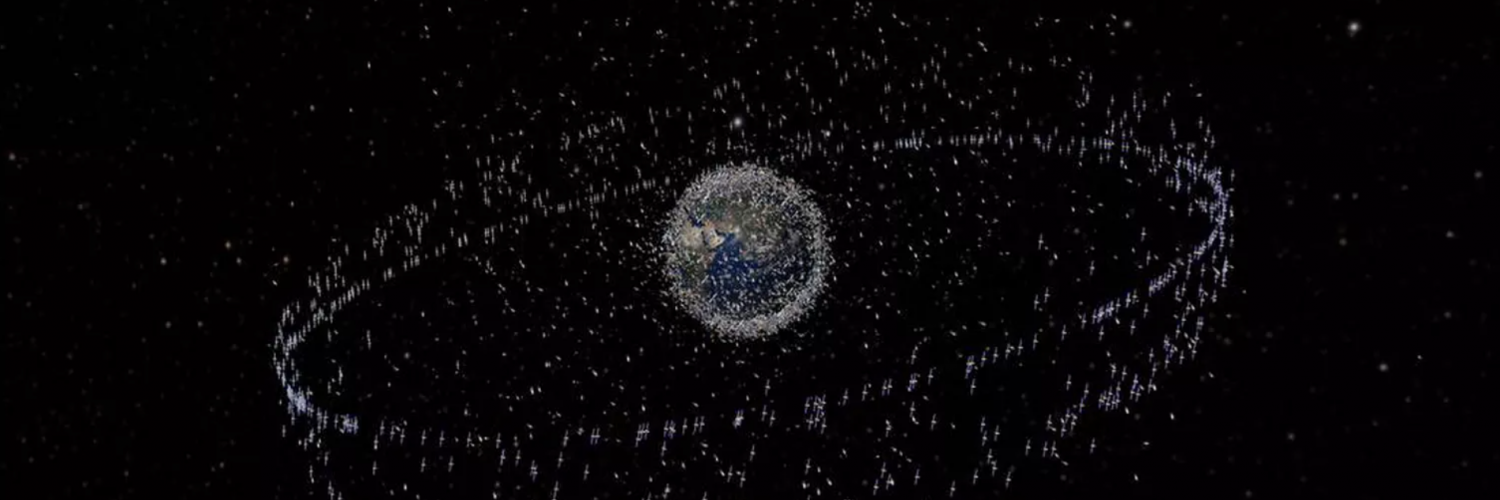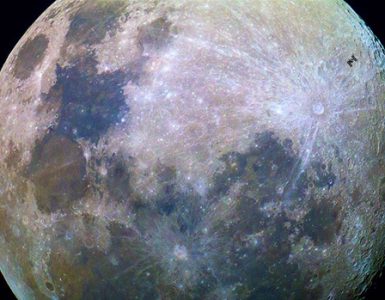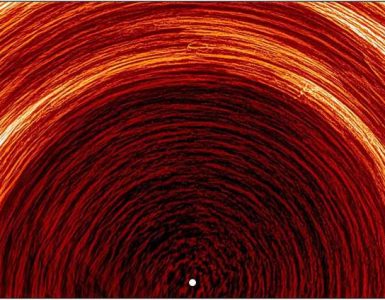by Rhodilee Jean Dolor
As low-Earth orbit becomes more congested, researchers are working on different ways to clean up space junk. Fragments from disintegrated satellites and old rocket parts travel fast enough they can hit spacecrafts, satellites, and the International Space Station (ISS), where astronauts are on board. The possibility that some of the hurtling fragments manage to pass through our planet’s atmosphere is not also entirely inconceivable.
Just two months ago in May, a nearly 20-ton piece of a Chinese rocket crashed down on Earth. The large chunk from the Long March 5B rocket, which China launched to orbit the planet for a test, did not burn up when it entered into the atmosphere. When it landed, it became the largest space junk to have uncontrollably fallen back into Earth’s surface since 1991, when the 43-ton Salyut-7 Soviet space station re-entered the atmosphere. Luckily, the piece from Long March 5B landed in the Atlantic Ocean.
While the possibility of large debris from space falling back to Earth remains remote, it may still happen and even lead to more devastating impact. Researchers are on the lookout for effective ways to clean up the Earth’s orbit to prevent the risks posed by space junks. Here are some of their most recent ideas:
Self-Destructing Robot
The European Space Agency (ESA) announced last year that it would launch the ClearSpace-1 mission, which is touted as the world’s first space cleanup mission, in 2025.
The plan is to use a four-armed robot to capture and de-orbit a 100-kilogram rocket fragment that was left in orbit after ESA deployed its Proba-V remote-sensing satellite in 2013.
The self-destructing robot will latch onto the fragment and then dive down to Earth, where it will burn up in the atmosphere along with the captured space junk. If everything goes as planned, ESA says the follow-up missions will aim to catch bigger fragments and multiple pieces of space debris at once.
“We will be continuing our development of essential guidance, navigation and control technologies and rendezvous and capture methods through a new project called Active Debris Removal/ In-Orbit Servicing – ADRIOS,” says ESA head of Clean Space initiative Luisa Innocenti.
“The results will be applied to ClearSpace-1. This new mission, implemented by an ESA project team, will allow us to demonstrate these technologies, achieving a world first in the process.”
Luc Piguet, chief executive of ClearSpace, the Swiss startup developing the robot, says the goal is to eventually de-orbit objects without destroying the debris-cleaning machine.
Foam Debris Catcher
A Russian startup is also working on a project that may eventually help clean up the orbital junkyard. StartRocket is developing a satellite called the “Foam Debris Catcher” that uses sticky polymer foam to capture and de-orbit space debris.
The device is like a spider web that ejects lattices of foam when it gets close to clouds of debris. The foam then covers tons of space junk and then descends into the Earth’s atmosphere and burns up.
Space junk expert John Crassidis, from the Department of Mechanical & Aerospace Engineering at the University at Buffalo, State University of New York says the foam can work in removing fragments in space because of aerodynamic drag, the force on an object that resists its motion.
“It works on the well-known process of increasing a debris surface area in order to increase its drag, and thus make it re-enter the Earth’s atmosphere and burn up faster.”
Phase one of the project will launch into orbit the Test Foam Sat (TFS) late next year to see if the foam concept will indeed work. The TFS is just a solar-powered 3D printer that will attempt to create square foam traps.
According to StartRocket, the TFS can de-orbit as much as 50 kg of space junk in five years. The firm adds that it will launch a bigger and more capable satellite if all goes well with phase one.
Harpoon
Another promising project that can alleviate the debris problem in space uses a harpoon designed to skewer and reel in space fragments.
In February 2018, the RemoveDebris mission successfully tested for the first time in space the harpoon technology developed by an aerospace company Airbus for debris removal. Engineers fired and successfully snagged an aluminum target out of orbit and reeled it into the main spacecraft.
“We have tested it extensively on the ground but obviously, there are things that we can’t completely simulate on the ground,” says Alastair Wayman, advanced project engineer. “The behavior in orbit and in the ground testing was very similar. We got the same accuracy that we expected, we got the same firing speed and we successfully captured the target, and doing that in space didn’t have an impact on the operation.”
Another test conducted in February 2019 yielded similar results. Researchers fired the harpoon at a satellite panel at a speed of 20 meters per seconds and successfully penetrated the target object.
Orbital-Use Fees
While most of the proposed solutions on reducing space junk focus on literally cleaning up the orbit, findings of new research published in the Proceedings of the National Academy of Sciences suggest an alternative approach to mitigating space debris: imposing orbital use fees.
Economist Matthew Burgess, an affiliated faculty member in Economics at the University of Colorado Boulder, and colleagues argue that managerial and technological solutions to remove space debris and de-orbiting satellites will not solve the issue because space junk is essentially an incentive problem. They also warn that the removal of space debris may even motivate operators to launch more satellites.
In their study, the researchers found that the orbital-use fees can force operators to consider the expected lifetime value of their satellites against the cost of launching another satellite into orbit, which could add up to more fragments in space.
“Companies aren’t accounting for the cost their satellites impose on other operators when they decide whether or not to launch,” said Burgess. “We need a policy that lets satellite operators directly factor in the costs their launches impose on other operators.”
Keeping Earth And Its Orbit Safe From Space Debris
Scientists are already aware that space debris poses a definite hazard as early as 1961. Still, the number of man-made objects circling Earth continues to increase as space agencies and private companies launch spacecraft and satellites into orbit.
Earth’s orbit is now more congested than ever, and with it is the increased risk of dangerous collisions that can destroy crucial instruments in space, and the hurtling back of bulky rocket and satellite fragments into Earth.
Hopefully, humanity’s improved scientific knowledge, particularly in space and physics, can eventually address the crowded condition in orbit. Our ability to clean up this junkyard beyond our atmosphere can eventually keep our space and planet safe.






Add comment